There were 1 posts tagged: Voice Tube
Headset Microphones: Which One is Right for You? Part 1 of 2
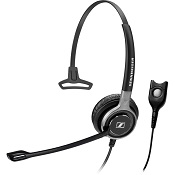 Office headsets, used for desk phones, computers and mobile phones, can keep your hands free, allowing you to talk while you work, type and even run errands! Choosing the right office headset can be an overwhelming task; by simplifying your choices and clarifying the options, we find the best solution for you. Part of the decision-making process is selecting a headset with a microphone that provides optimal communication.
Office headsets, used for desk phones, computers and mobile phones, can keep your hands free, allowing you to talk while you work, type and even run errands! Choosing the right office headset can be an overwhelming task; by simplifying your choices and clarifying the options, we find the best solution for you. Part of the decision-making process is selecting a headset with a microphone that provides optimal communication.There are three main types of microphones available on the market today. We've laid each style out for you below, according to their level of background noise-cancelling. This list begins with a minimum and progresses along the continuum to the most background noise-cancelling offered.
Voice Tube/Sound Tube/Omnidirectional
Each manufacturer uses different terminology for this type of microphone, which carries sound from your mouth to a microphone that's housed in the ear of the headset. This design allows for headsets to be manufactured at a reduced cost; the drawback is that the mic does not have any noise-cancelling technologies.
The microphone is equally sensitive to sound from all directions, so that background noises will be picked up and transmitted by this microphone; the headset user's voice may be difficult to hear because of this. Sound enters on one side of the diaphragm only. (All microphones have a diaphragm, so that when the diaphragm vibrates, it causes other components in the microphone to vibrate. These vibrations are converted into an electrical current which turns into the audio signal.)
The voice/sound tube or omnidirectional microphone style is ideal if you occupy your own private office with little to no background noise.
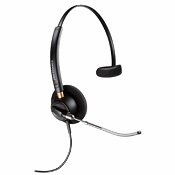
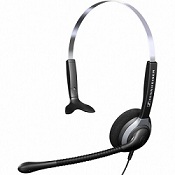
Plantronics EncorePro 510 Voice Tube and Sennheiser SH 200
Noise-Cancelling
The next step on the continuum is Noise-Cancelling. This microphone design eliminates the majority of background noise. Upgrading to a noise-cancelling microphone is well worth the minimal extra dollars, if your environment tends to have area noise. Digital Signal Processing (DSP) is one technology used to largely reduce background noise, enhancing understanding as well as efficiency of calls. Colleagues, wind and other ambient noises are filtered out and therefore not transmitted to your caller through the microphone.
Noisy contact centers, open concept office environments and mobile workers are great candidates for these noise-cancelling microphones.
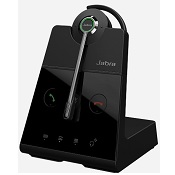
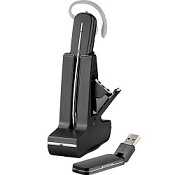
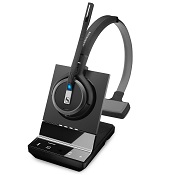
Wireless Solutions: Jabra Engage 65 Convertible, Plantronics Savi W445 and Sennheiser SDW 5033
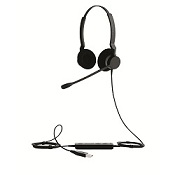
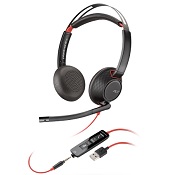
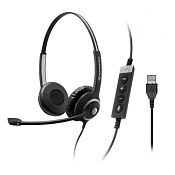
Corded Solutions: Jabra Biz 2300 USB Duo MS, Plantronics Blackwire 5220 and Sennheiser SC 260 MS II
Ultra Noise-Cancelling
Ultra Noise-Cancelling microphones offer absolutely the best noise cancelling technology on the market. The placement of the micron components have been moved away from the entrance to the diaphragm, so the openings on both sides of the diaphragm are symmetrical. The effect is a near-elimination of background noise.
Take note that these microphones do tend to be a bit sensitive in regard to microphone positioning. The microphone should always be positioned precisely near the mouth in order to avoid the headset cancelling out all sounds - including the user's voice!
These microphones are best for extremely noisy contact centers and offices.
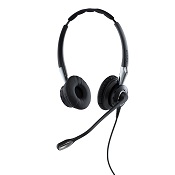

Jabra Biz 2400 II and Sennheiser SC 638
For more information about the importance of Microphone Positioning, read Part 2 of our blog post series.

